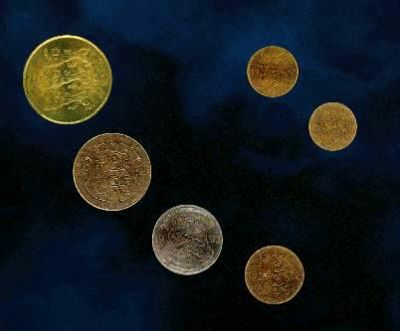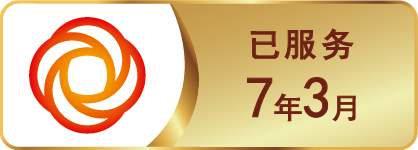爱沙尼亚克伦尼
出自 MBA智库百科(https://wiki.mbalib.com/)
爱沙尼亚克伦尼(Estonian Kroon/Estonian krooni 标准符号:EEK)
目录[隐藏] |
ISO 4217 Code:EEK
User(s):Estonia
Inflation:4.4%
Source:The World Factbook, 2006 est.
ERM:
Since:28 June 2004
Fixed rate since:31 December 1998
Replaced by €, cash :1 January 2008 tentative
€ = 15.6466 krooni
Band:pegged in practice, 15% de jure
Subunit:1/100 sent
Symbol:KR
Plural:krooni
sent:senti
Coins:
Freq. used:10, 20, 50 senti, 1 kroon
Rarely used:5 senti, 5 krooni
Banknotes:
Freq. used:2, 5, 10, 25, 100, 500 krooni
Rarely used:1, 50 krooni
Central bank:Bank of Estonia
Website:http://www.bankofestonia.info
The kroon (ISO 4217 code: EEK) has been the currency of the Republic of Estonia since 1928. One kroon is divided into 100 senti.
Estonia was a part of the Russian empire until it declared its independence in 1918 and remained an independent nation until the second world war when it opted to be admitted to the Soviet Union as a Soviet Socialist Republic in 1944. For a brief time in 1918 Germans occupied parts of Estonia and German marks became the currency of the land. After the Germans left in November 1918, Estonia was again independent and established its own currency, the Estonian marka. The marka was established at par with the German mark and was equal to two Russian rubles. The marka did not suffer quite the same inflation that Germany did but in 1924 the marka was replaced by the kroon as the unit of account, at a rate of 100 marka to one kroon. In 1928 the Bank of Estonia began issuing notes and coins denominated in kroon, prior to this the Estonian government held note and coin issuing responsibilities. The kroon was divided into 100 penni. When Estonia joined the Soviet Union it ceased issuing its own national currency and opted to use Soviet coins and banknotes. Estonian used the ruble up until the breakup of the Soviet Union, in 1992 Estonia declared its independence and once again established a central bank and its own currency the Kroon. The new Kroon was introduced at a rate of ten Soviet rubles for one kroon. Initially, the value of the kroon was linked to that of the German mark at a rate of eight krooni to one mark. Since Estonia’s independence in 1992 the value their national currency has remained stable. Estonia joined the European Union in 2004 and from what I understand they intend on adopting the euro in the next two or three years.
The Estonian kroon’s ISO 4217 code is EEK, the kroon is divided into 100 senti and the plural of kroon is krooni. Currently coins in circulation are in denominations of 5, 10, 20 and 50 senti and 1 Kroon. Eesti Pank, Estonia’s central bank has also issued 5 Krooni commemorative coins, although they are never seen in circulation, it also ceased issuing the 5 senti coin. Banknotes are issued in 1, 2, 5, 10, 25, 50, 100 and 500 Krooni denominations.
First Kroon, 1928-1940
The first kroon was introduced in 1928. It replaced the mark at a rate of one hundred to one. It circulated until the Soviet invasion of 1940. The kroon was exchanged for Soviet rubles at a rate of 1 ruble = 0.8 kroon.
Second Kroon, 1992-
The second kroon was introduced on 20 June 1992, replacing the Soviet ruble at a rate of 1 kroon = 10 rubles. Initially, the Estonian kroon was pegged to the German mark at a rate of 8 EEK = 1 DEM. It has been stable since then. After the introduction of the euro the fixed exchange rate of 1.95583 DEM to EUR led to an exchange rate of 15.64664 krooni to the euro.
The kroon is now officially in ERM II, the EU's exchange rate mechanism. As it remains pegged to the euro, it makes no use of its 15% fluctuation band. Estonia was party to joining the mechanism since joining the EU - actual entry was on 28 June 2004 .
Notes in circulation:
* 1 kroon (1992), * 2 krooni (1992;2006), * 5 krooni (1991;1992;1994), * 10 krooni(1991;1992;1994;2006), * 25 krooni(1991;1992;2002), * 50 krooni(1994), * 100 krooni(1991;1992;1994;1999), * 500 krooni(1991;1994;1996;2000).
Coins in circulation:
* 10 senti (1991;1992;1994;1996;1997;1998;2002;2006), * 20 senti (1992;1996 and 1997;1999;2003;2004;2006), * 50 senti (1992;2004;2006), * 1 kroon (1992;1993;1995 and 1998;2000;2001;2003;2006), * 5 krooni (1993 and 1994).
The 5 sent coins and 1 kroon notes are no longer being issued. The 5 kroon coins were only issued as commemoratives. As a result, all three are currently rarely found in circulation. Also the 50 kroon notes are not very popular in Estonia and are not seen in everyday circulation very often.
Foreign currency prices last updated: Saturday, 23 June, 2007
Value of 1 Estonian Kroon:
| 0.04 Pound Sterling | 0.06 Euro | 0.09 US Dollar |
| 0.1 Australian Dollar | 0.12 Bulgarian Lev | 0.09 Canadian Dollar |
| 0.65 Chinese Yuan | 0.47 Croatian Kuna | 0.04 Cyprus Pound |
| 1.83 Czech Koruna | 0.48 Danish Krone | 1 Estonian Kroon |
| 0.67 Hong Kong Dollar | 15.7 Hungarian Forint | 5.36 Icelandic Krona |
| 773.56 Indonesian Rupiah | 10.66 Japanese Yen | 0.04 Latvian Lat |
| 0.22 Lithuanian Litas | 0.3 Malaysian Ringgit | 0.03 Maltese Lira |
| 0.11 New Zealand Dollar | 0.51 Norwegian Krone | 3.95 Philippine Peso |
| 0.24 Polish Zloty | 0.2 Romanian Leu | 2.23 Russian Ruble |
| 0.13 Singaporean Dollar | 2.15 Slovakian Koruna | 0.61 South African Rand |
| 79.73 South Korean Won | 0.59 Swedish Krona | 0.11 Swiss Franc |
| 2.77 Thai Baht | 0.11 Turkish Lira (new) |
Obverse Design: Lydia Koidula (1843-1886) Estonian poetess and playwright
Reverse Design: A view of the north Estonian limestone shore
Obverse Design: Paul Keres (1916-1975) A famous Estonian chess player
Reverse Design: Order stronghold, the Narva River and the fortified stronghold of Jaanilinn
Obverse Design: Jakob Hurt (1839-1907) Estonian folklorist, theologist, linguist and prominent social figure
Reverse Design: A view of the Tamme-Lauri oak at Urvaste
Obverse Design: Rudolf Tobias (1873-1918), a famous Estonian composer
Reverse Design: Estonia Opera House in Tallinn
Obverse Design: Anton Hansen Tammsaare (1878-1940) Estonian writer of classical literature
Reverse Design: A view of Vargamäe

 无广告阅读
无广告阅读  免验证复制
免验证复制  微信支付
微信支付  支付宝
支付宝  PayPal
PayPal 



















